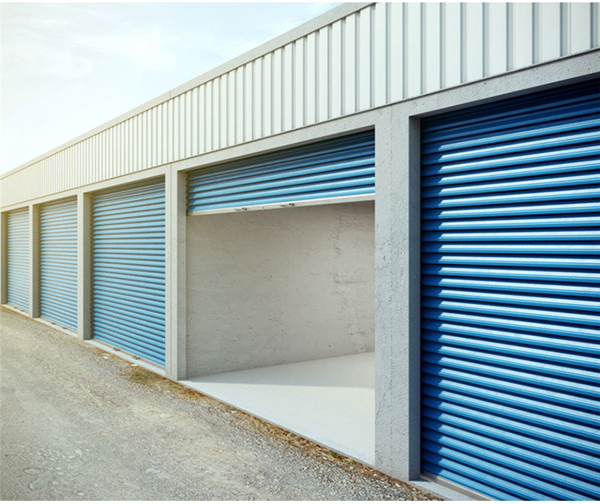0086-13924498389 info@qiruisafe.com
Choosing the color for a rolling shutter door is an important decision as it significantly impacts your property's curb appeal, security perception, and even energy efficiency. It's a balance between aesthetics, practicality, and sometimes, regulations.
Here’s a comprehensive guide on how to choose the right color, broken down into key factors.
First, ask yourself the main goal:
To Enhance Curb Appeal: Do you want the door to be a design feature that blends or stands out?
To Be Discreet/Unobtrusive: Is the goal to make the door recede visually, especially if it's on a residential property?
Your answer will guide your color choice significantly.
The most foolproof method is to choose a color that already exists on your property. Look at:
Architectural Style: Is your home modern, traditional, industrial?
Modern/Industrial: Dark shades (charcoal, black, dark grey), metallic finishes (anthracite, aluminium), or even bold accent colors (e.g., a deep red or blue on a grey building) work well.
Traditional/Classic: White, cream, beige, or softer greens and blues often complement brick, stone, or painted wood façades.
Brickwork/Stone: Pick a color from the mortar, the brick itself, or the stone's undertones. A cream door can match mortar, while a grey door can pick out grey stone elements.
Fascia, Soffits, and Gutters: Matching the door to your white gutters or dark grey fascia is a very common and safe choice.
Window Frames and Trims: This is often the best element to match. A white rolling shutter on white window frames creates a cohesive, integrated look.
Front Door: Coordinating with your front door can create a balanced and intentional design, especially if your front door is a bold color.
Light Colors (White, Cream, Beige, Light Grey):
Pros: Make a building look larger, reflect heat (better energy efficiency in sunny climates), feel clean and friendly. Ideal for residential settings.
Cons: Show dirt, dust, and pollution more easily and may require more cleaning.
Dark Colors (Black, Charcoal, Dark Grey, Dark Blue/Brown):
Pros: Perceived as more secure, robust, and modern. Hide dirt and stains better. Can create a striking, sophisticated contrast against a light-colored wall.
Cons: Absorb heat, which can be a downside in hot climates (though modern shutters have thermal breaks). Can make a building look smaller or more imposing.
Neutral Colors (Grey, Beige, Brown):
Pros: Extremely versatile, safe, and unlikely to clash. They are timeless and work with almost any architectural style.
Cons: Can be seen as a "non-choice" or lack personality if not chosen carefully.
Bold Colors (Red, Blue, Green, Yellow):
Pros: Make a strong design statement. Great for commercial properties, studios, or modern homes wanting to express individuality.
Cons: Risk of clashing with other elements. Can quickly look dated. Always check a large sample against your building.
Climate: In hot, sunny regions, a light-colored shutter will reflect heat, keeping the interior cooler. In cooler climates, a dark color might be preferable.
Maintenance: If you are in a dusty area or near a road, a mid-tone grey or beige will show less dirt than a pure white or pure black.
Location & Orientation: A south-facing door will get the most sun; consider heat reflection. A door in a shaded, damp area might be prone to algae or moss, which is less visible on darker colors.
Homeowners Associations (HOAs): If you have an HOA, they almost certainly have rules about external modifications, including shutter colors. Always check their guidelines first.
Local Planning Regulations: In some areas, especially conservation areas or on listed buildings, you may need permission to install a shutter, and there will be strict rules on acceptable colors (often requiring them to be historically accurate or discreet).
Commercial Properties: Brand colors might dictate the choice. Otherwise, corporate neutrals (blacks, greys, blues) are common.
Check Rules: Confirm any HOA or local authority restrictions.
Define the Goal: Is it to blend in or stand out?
Gather Inspiration: Look at photos online (Pinterest, manufacturer websites) of properties similar to yours.
Audit Your Palette: Take photos of your house and note the colors of the roof, walls, trim, windows, and doors.
Get Samples: This is the most crucial step. Order physical color swatches from the shutter manufacturer. Do not rely on digital screens.
Test the Samples: View the large samples on-site at different times of the day (morning, noon, evening) and in different weather conditions (sunny, cloudy). See how the color looks against your wall and next to your windows.
Make the Final Choice: Go with the option that best meets your practical needs and aesthetic vision.
White: Classic, clean, perfect for matching white trim and windows. Very popular for residential homes.
Anthracite Grey / RAL 7016: Arguably the most popular modern choice. It's a very dark, almost black grey that looks sophisticated, modern, and discreet on most properties.
Black: Bold and defining. Excellent for creating strong frames around windows on light-colored walls.
Light Grey / RAL 7004: A versatile, softer alternative to white that hides dirt well.
Chartwell Green / RAL 6021: A classic, muted green that works beautifully on period properties or homes in rural settings.
By carefully considering these factors, you can choose a rolling shutter color that not only protects your property but also enhances its overall look and value.
